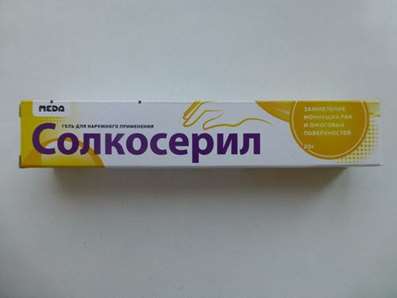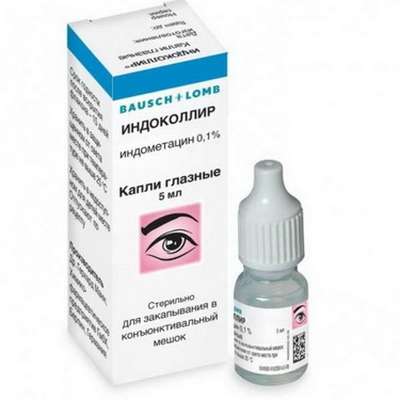Social research if Immunology
07 Dec 2016
How it was discovered the phenomenon of immunity? Why humanities researchers are interested in the way people thought about the work of the immune system? What are the models of the immune system?
In 1882 Russian physiologist Ilya Mechnikov discovered the phenomenon of immunity. His family went to the circus to watch presentation of monkeys, he stayed at home and decided to conduct a simple experiment. He took a transparent starfish larva, pierced her spine roses and left until the morning. Morning woke up, looked in the microscope in the larva and saw beings activity, which he called phagocytes. The phenomenon called phagocytosis, and suggested that the way our body protects itself from external influences, and the ability to defend called the word "immunity".
The very word "immunity" has a very long history. It appeared in Roman law and was associated with the release of some or other obligations - it has a legal origin. But Mechnikov decided to use this word to refer to a biological reality. Since then, it took many years, in the late 80-ies of immunology very firmly established in our lives, and with it began to explain to a person's health, his life and death. By and large, when they say today about medical things, very much used immunological terms and concepts, including and in everyday life.
To improve immune system – buy IRS 19 nasal spray, Bonomarlot, Ladasten, Complex of cytamins for the immune system, Cerluten, Prednisolon.
Immunology has several dates of birth. It's not just December evening in 1882, this 30-ies of XX century, when the first chair of this 60-ies of XX century, when there is the notion of the immune system, the key to this discipline and it is 80 years, when through popular science magazines, through cover, through articles immunology gradually enters into the lives of ordinary people. And people are starting to operate with these terms and concepts, such as for example the immune system.
In the 90s there studies in which scientists are trying to understand how there is an idea of the immune system. Here we are talking about humanities scholars. Anthropologists, sociologists and philosophers of science trying to figure out how, where and who constructed the immune system. Pioneer work here is the work of feminist author, an American researcher Donna Haraway. In the 90s she published an article, which was entitled "Biopolitics postmodern bodies."
In this article we are talking about the fact that the immune system does not exist by themselves, they are not a part of nature, they do not exist in the bodies. This is a very complex polymorphic heterogeneous objects, which consist of a large number of actors, or actors. And the nature of these actors is twofold: they can be material objects, and they can be a sense or meaning - semiotic objects.
Haraway one of the first pointed to the fact that the immune system plays a very important role in people's lives, just as 90 years, and when people talk about their health, they somehow use the terminology associated with the immune system. And, accordingly, for Haraway it was very important to show not only that they are not immune systems do not exist in nature, a part of nature, but also the fact that in these complex facilities there is very variable boundaries.
For immunology it is very important to distinguish between his own and others. This distinction in the 60s brought immunologist Frank Burnet. His - the body, the immune system, and someone else's - is the environment, pathogens that are trying to influence the body and cause disease in a certain way. Due to the fact that there is a very strict distinction between own and others, the immune response is possible. Accordingly, the immune system recognizes and reacts itself over recognizes foreign or not their own, and responds to it in a certain way.
The task, which stood in front of Donna Haraway, is to show that the border between their own and other people's mobile enough, the boundary between the human body and the environment is movable.
For feminist Haraway's very important to show that the boundaries are fluid. For example, it refers to the ancient Greek science and shows that the Greeks, the founders of the very principle of the border (for example, for them it was very important to delimit human and animal, male and female - male as a human ideal), those who established these strict boundaries of European thought , moving away from its principle, and constantly introduce various types of beings who have a hybrid nature. For example, the Amazon - is formally a woman, but they behave like a man and a centaur - this is clearly a hybrid of human and animal.
Accordingly, this kind of hybridization is also characteristic of the immune system, it is characteristic of human bodies. Such hybridization Haraway describes using the word "cyborg" - is her favorite word - as in the case with the immune system, it tries to show that the boundaries between the human body and the environment rather relative. It does this in an original way.
For scientists, perhaps the main evidence that the immune system, there are so-called micrographs - a photograph of the immune system components which are made with an electron microscope. These pictures look very strange and conjure up different images: from galaxies to the seabed. And Haraway shows based on some analysis of these micrographs, that the person who understands that his "own", his self, his "I", his identity is no longer functioning in the form in which functioned until then - as some controls , central authority that controls your body, - photographs are a testament to a reality that goes beyond the limits of the human body. Hence Haraway concludes that the boundaries between the human body and the surrounding reality, between his and others are moving, that is, they are not fixed once and for all. Our experience of looking at this kind of photomicrographs shake our perception that our "I" is able to control this reality, and in a certain way to interact with the environment.
Donna Haraway was very talented pupil - Emily Martin, an American anthropologist. She was engaged in the study of kinship in Taiwan and China, and then wrote several anthropological books that were devoted to the issues, non-traditional anthropology. She has published a book about reproduction, then book on immunology, and later, she published a book about the so-called bipolar depression.
Book in immunology called "flexible body". This is a very interesting anthropological study in the early 90s in Boston and Baltimore. Haraway and his assistants asked people in different groups, what they think about the immune system, such as, in their opinion, the immune system works, asked to draw the immune system, to describe what they see and what they think showing them micrographs components of the immune system.
Donna Haraway spoke with people on the street, with the students who have studied immunology, with scientists in a laboratory, with the representatives of non-traditional medicine, with people who were seriously ill, for example, AIDS, and so on. As a result of these conversations, it became clear that people imagine the immune system mainly in the context of the clash of his and others. It's such a militaristic model of the immune system. The idea was that the body is all the time in the war, and the work of the immune system is described in terms of war and military affairs. That is, it could be portrayed fortress, and the penetration of the disease was a siege of this fortress. Accordingly, Haraway draws a parallel between this model of the immune system, which deals with the division between his and others', and similar ideas in people.
Nevertheless some people talked alternative models of the immune system, in which there were no clear boundaries. One woman drew waves of the ocean. When she was asked what she meant by the immune system in the form of the ocean, she said: "My immune system is working in the context of balance: if comes disease, then one part is raised, and if the disease goes away, it again falls, and everything is back in place. "
Haraway has shown that this kind of competition between the different models makes this science homogeneous. There is no once and for all of the knowledge of the immune system - this knowledge is in formation. Immunology is a competition between several models.
In addition to the model Burnet, there are at least two models, which show that the immune system works quite differently.
In 1984, a Danish immunologist Niels Jernej received the Nobel Prize for his description of the immune system. In his concept of the immune system does not interact with the outside world, and it is constantly irritated herself and is constantly preparing an immune response to it has come from. You can call this model autopoietic.
The third insight into the work of the immune system exists in microbiology. This model can be called a symbiotic. It is a fact that between his and others' too, there are no borders, because so-called friends and enemies are always in symbiosis. Without symbiosis would be impossible to explain, for example, digestion, because we are talking about so-called friendly flora. That is, those who believe in the classical model of the enemy, in fact, prove to your friends and help us in case of indigestion.
Haraway The main idea was that people quite differently imagine the immune system, it is concentrated around a few models. And by and large immunology - a competition of several models of the immune system. But if it was due to the fact that somewhere in the body there is some reality which we call the immune system, like a thing in itself, and we, or people on the street, or people for Haraway, and Martin work of the immune system in the laboratory or in the humanities scholars interpret it in a certain way, the next step in the analysis of the social immune systems will be linked to the fact that we will see that no immune system does not exist within the body. Each time the immune system is re-created and constructed in a particular location in the laboratory it may be a model in the clinic is the other, on the street can be a third model.
And the challenge will be how these different models are correlated with each other, what kind of work coordination is carried out to the people the impression, due to the fact that there is only one immune system. In this sense, it would be interesting to look at a single institution in which there are different divisions or different departments. See what the error in understanding the structure of immune systems exist between departments or divisions, between the laboratory and the clinic, between the administration and the people who expect to receive, and so on. It would be interesting to see, on the one hand, on the mismatch, and on the other hand, the coordination of the work under way between the departments to keep the action of different groups of people within the framework of a common understanding, a common channel.

 Cart
Cart





